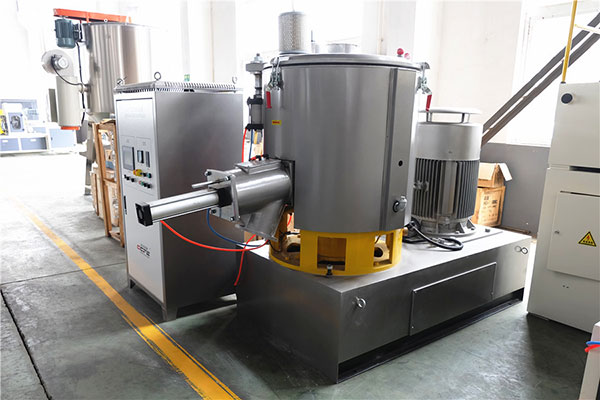Golden Far East Machinery Co.,Ltd.
Manufacturing Plastic Machinery Factory
The processes involved with manufacturing products in sectors such as food, bakery, nutrition, and chemical sector usually requires the blending of ingredient mixture.
Blending in most of the applications is an essential process that increases the quality of the product.
If you have a long list of ingredients to blend and some of these ingredients can expose one to an allergic reaction, a high-speed mixer installment will be needed for thorough mixing.
Though this does not necessarily translate into a strong return on investment or permanent solution.
When shopping for one to install in your company, you need to partner with a reliable and trusted high-speed mixer manufacturer for quality and durability.
The Characteristics of the Powder
The choice of a mixer to use depends to a large extent on the nature of the powder.
For example, if you are working with free-flowing powders as a recipe and would need them to be mixed easily; a ribbon blender or tumble-blender is best suited for it.
However, if the powders are cohesive and sticky and you need them to be uniformly mixed together, then you need to work on the mixture to cause the particles to blend together.
A mixer that offers high shear properties would be needed. It is important to note that the appropriate shear level is applied to avoid particle disintegration and excessive heat in the mixture.

Understand the Absolute Mixing Time
The suggestion of 4 minutes blending period can be misleading and you shouldn’t fall victim.
Actually, the complete end to end operation time includes the entire stages of blending i.e. from filling through to packing and cleaning stages.
The waiting time to get the mixer prepared for the next set could mean 3 hours of packing and 2 hours to load.
Though the use of intermediate bulk container blending can take a little longer period to complete, the aspect of the formulation can be finished off-line.
This waiting time can be significantly reduced by running the processes of filling, mixing, and packing stages in parallel with the advantage that the blender will not be cleaned.
Ease of Cleaning
Generally, working with a fixed blender with many moving parts can lead to a loss of products.
Some of these products can be left at the bottom of the mixer bowl or adhering to the paddles, sidewalls, and bearings.
Apart from the huge loss, in the long run, it can lead to the contaminations of the batches.
A thorough cleaning can be done by dispatching the fixed mixer and then carry out a complete wet wash and properly dried.
Apart from safety and convenience that should be considered when cleaning, the process takes a lot of time to complete.
It is a laborious task with lots of wastes. Once the intermediate blending containers are cleaned, it can be restored to the processing line.
Risk of Cross-Contamination
The possibilities of the presence of allergens increase with the number of ingredients used in the recipes.
It is a difficult task for manufacturers to carry out recipe changeovers and clean- down effectively and efficiently.
Again, the mixing of different recipes on the same blender increases the risk of cross-contamination.
As a precaution, companies usually dedicate a single blender to allergen-containing recipes.
While this practice is very good if only one additional fixed mixer is required, in a situation where half a dozen is needed, it is not economical
A safe and simple solution to avoid cross-contamination is with the use of IBC blending.
With this, the manufacturer uses the IBCs for one recipe, properly clean it before reintroducing it for another process.
Since there are no parts of the blender in contact with the product, the blender can be reused for a different batch.
The nature of valves used in building the IBCs is also important in this preventive measure against contamination.
A cone valve does better in stopping the mix-segregation of products than the butterfly valve container.
Conclusion
Industrial processes in the food, nutrition, and other sectors cannot be achieved without the use of mixers.
Some peculiar cases need the use of high-speed mixers for efficiency in mixing the ingredients.
Hence the need for an experienced and reliable high-speed mixer manufacturer to deliver quality breed to you for maximum satisfaction and value for money.